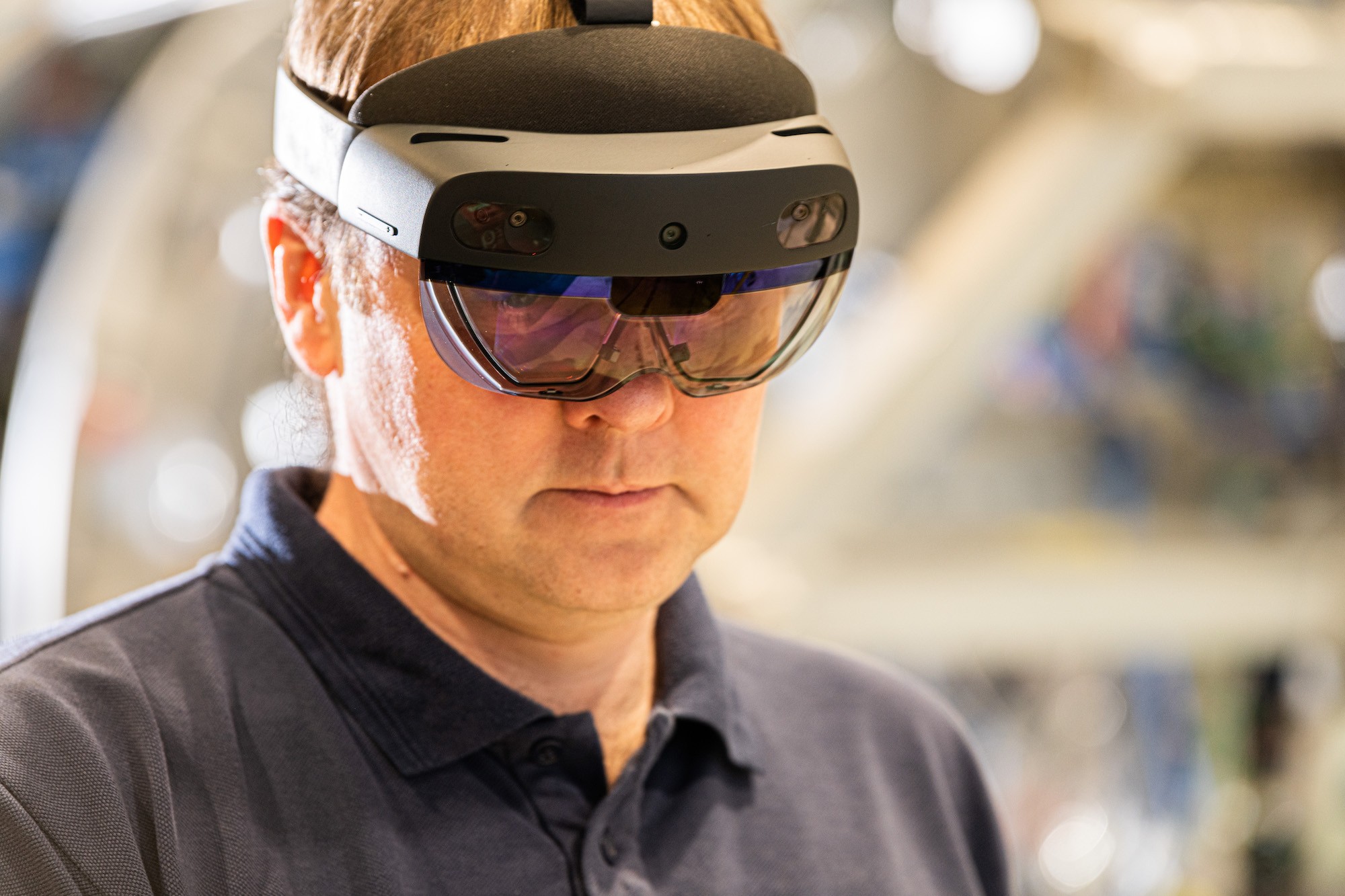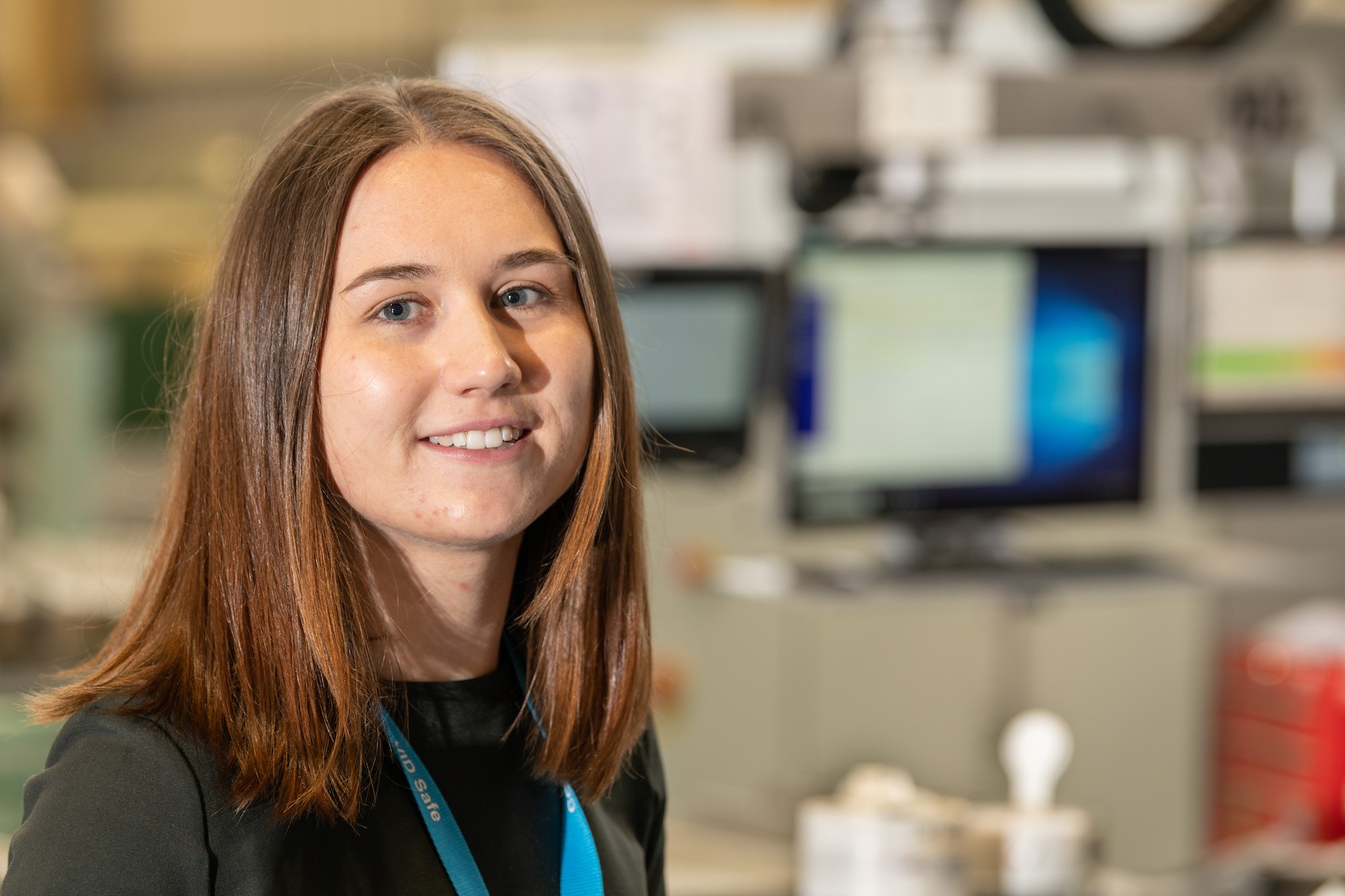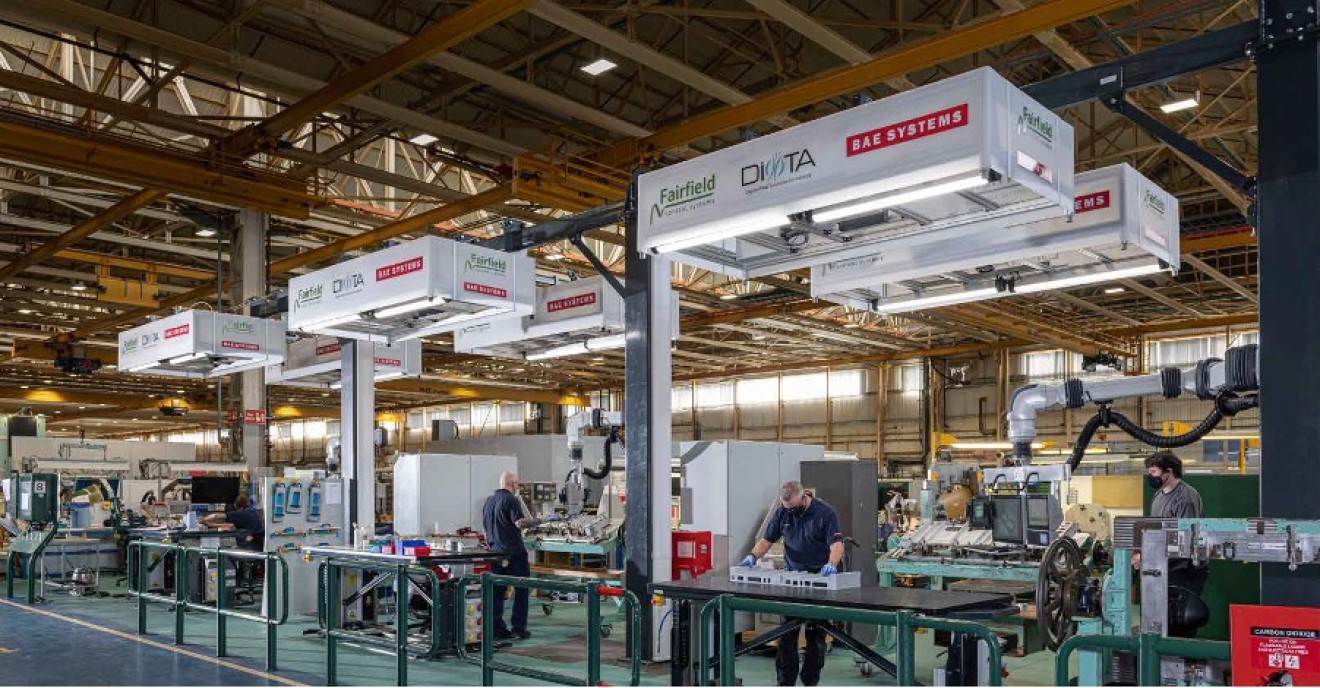
That collaborative approach is illustrated by the way the teams on the project are driving those changes forward – sharing their ideas and thoughts on how the tasks they must carry out can be made easier through this transformation.
As a result, the days of ‘old tech’ 2D drawings and text-heavy instructions are being replaced by the ‘new tools’ of 3D animated work instructions, augmented reality, projected work instructions and use of headsets, all being harnessed to help drive further efficiencies.
Martin Knott is the Assembly Team Lead for Airframe Technology Delivery. He believes these are exciting times for those working on the Typhoon where production work is underway in support of the Quadriga programme for the German Air Force. And he explains how the need for change is being driven by a focus on export programmes affordability with a variation of production rates and requirements. He says:
Headset Tech
Operating in confined, tight spaces on the Typhoon airframe has been one of the challenges for production line workers. It has not been made any less difficult by the continuing need to refer to drawings and written instructions. The headset technology Neelofar Ansari, a Senior Manufacturing Engineer in Airframe Technology Delivery, has helped to introduce, are easing that strain, improving working conditions and making the tasks involved easier to complete. They allow the fitter or electrician to work hands free, with the information they need projected in front of them or overlayed onto the ‘real world’. Neelofar explains: “The labels they need to put in place as part of the process are overlayed, so they don’t need to keep continually referring back to drawings. Here they can see it all in front of them.” She says that the development of the technology originated from a challenge set by the operators to provide a solution to this difficult activity and during the development the feedback received from operators has been vital in ensuring the technology is of help to them in their roles and is delivering efficiencies. She says: “All the teams we’ve been involved with have been really good in working with the technologies, to see how they can be of real benefit. It has been a collaborative approach, with everyone on board. “We ’ve been told when things aren’t working as well as they could be and that is really important. People must be comfortable with the technology and confident that it is benefitting them. “When operators start using the technology and we begin to get the feedback, that’s when the project becomes really exciting, you find out how best to improve the technology to work for the operators and the job at hand.”
“There is a need to adapt to that world. It is a competitive marketplace, and it is no longer a case of doing things the way we’ve always done them. We’re investing in technologies and techniques that support the operators and to help them to do their jobs, to increase efficiency.”
That support includes 3D animated instructions, created by the Manufacturing Engineering teams to show the operator what needs to happen in a process and the sequence it needs to happen in.
Martin likens it to the way we look for information when at home, we pick up a tablet and look at YouTube tutorials or like furniture business IKEA use an app to make its assembly processes clearer. He adds: “It is about knowing exactly what is required and exactly what the operation is.”
These new innovations can be found on the Typhoon production line integrated into smart gantry systems. Each gantry features a projection system that live tracks a part and guides the operator to the correct positioning requirements.

The use of tablets that provide augmented reality information is also making things clearer for the production line worker and more intuitive to understand. Easier to handle, their flexibility is a big plus. When it comes to working in confined spaces on the airframe, newly developed headsets allow the fitter or electrician to work hands free, with the information they need projected in front of them or overlayed onto the ‘real world’.
Much of this innovation is being born on the shop floor, with apprentices and time-served operators working together in developing, testing and also getting feedback which can be used to further hone the technology.
The collaborative approach that is being taken can also be seen in the close working relationship that exists with specialist suppliers in a range of areas, from augmented reality to IT security. The project has its roots in BAE System’s ‘Factory of the Future’ initiative where technologies are developed and often implemented in other areas of the business.
A good example would be the Intelligent Workstation which came out of a collaboration with the Advanced Manufacturing Research Centre (AMRC) in Sheffield and was introduced to the Typhoon production line in recent years Key supply chain partners in the smart gantry system include UK-based systems integration specialist Fairfield Control Systems and French company Diota, a leading software provider in augmented reality solutions and the developers of the projection systems being used.
Martin says the positive reaction on the production line is making a real difference in ensuring the technologies are adapted to be of the biggest possible benefit to those using them – and that includes improving the working environment, an important part of the process. He says: “It does require a change in mindset. It is about getting the right systems and communication in place and honest feedback is vital in that.
“The engineers that have been leading the developments and driving the introduction of the technologies have been fully engaged with the fitters, electricians, supervisors, engineers and managers and that has been a huge positive. The team has really come together to embrace change.”
That dynamic will continue. The technologies introduced continue to be improved upon and Martin talks about possible future innovations, which will extend the use of technologies right the way through the production facility.
He says: “We’re on a journey with this, constantly adapting to and incorporating the latest available technologies that add benefit”. Our common goal is to improve efficiency and to embrace technology and new ways of doing things in the process and that is exciting.
“This is all about assisting our people and helping make it easier for skilled people to do the job they have been trained for.”
Ian Sudlow, Head of Technology Delivery for Airframe, agrees. He says: “This is another great example of the work we are doing to spin out technology from our Factory of the Future project at Warton and deliver benefit onto our current programmes.
“The use of collaborative technologies has the potential to significantly reduce cost, improve quality and enable our skilled workforce to add value by providing them with the information they need exactly at the point and in the format they need it.
“These technologies form a key part of our manufacturing approach for the future and it’s great to see us able to de-risk and leverage their potential on Typhoon. I’m really proud of what the team has achieved with this work in a relatively short time span.”
